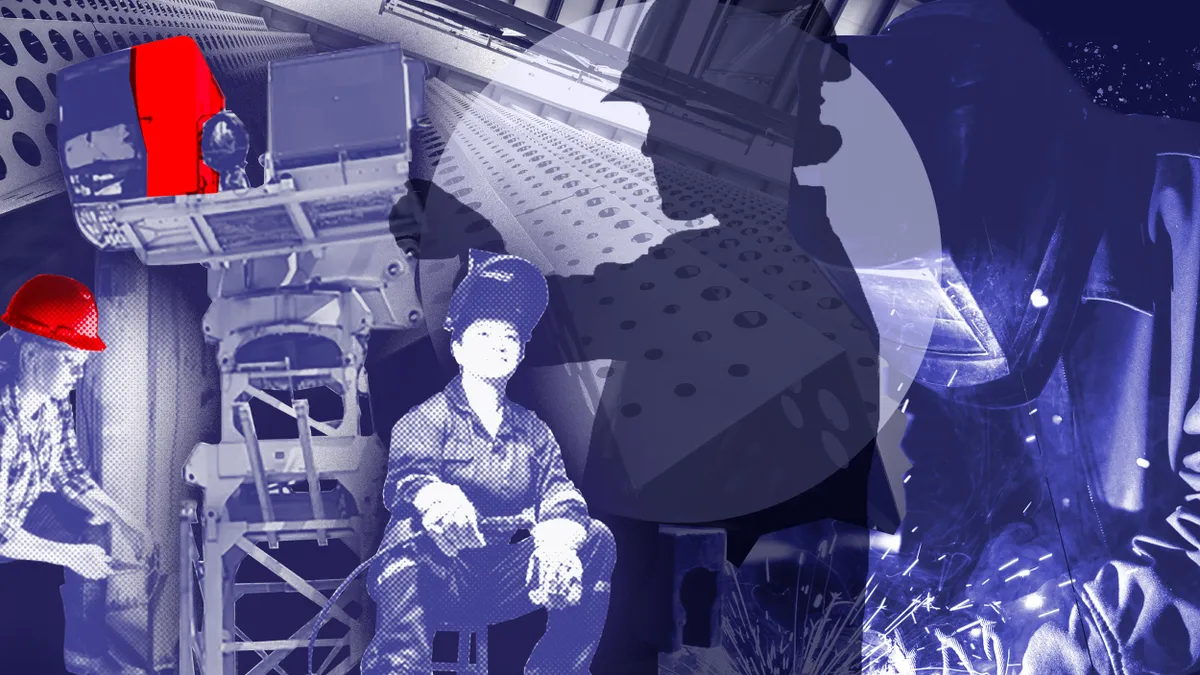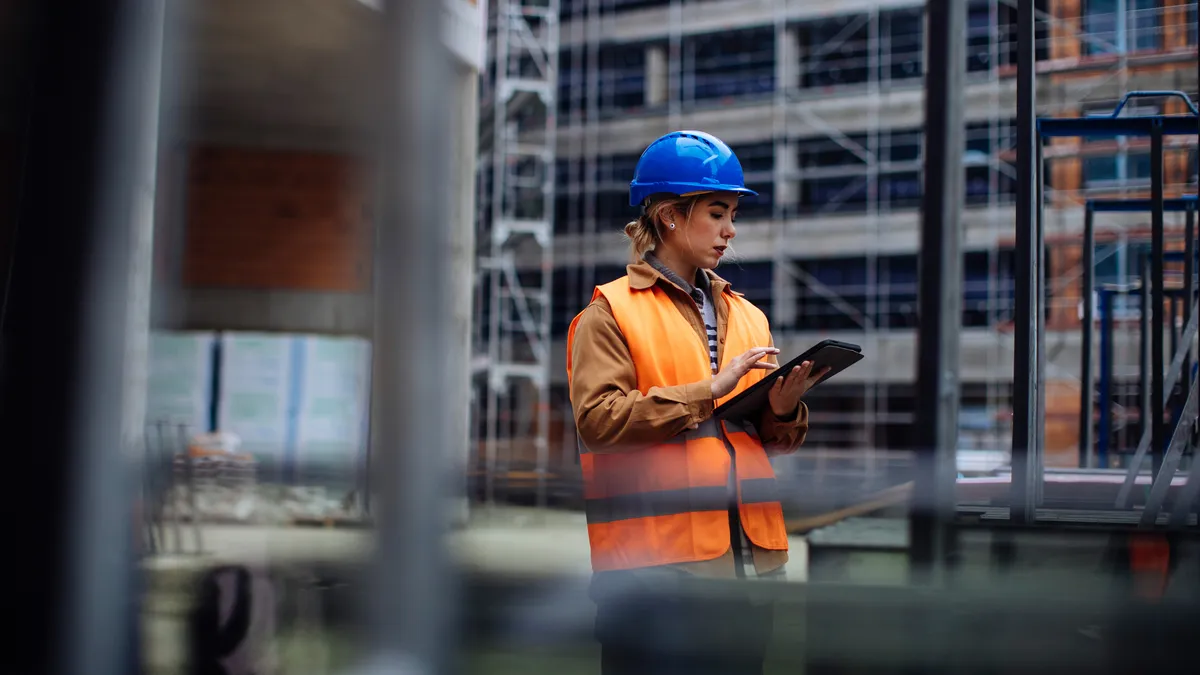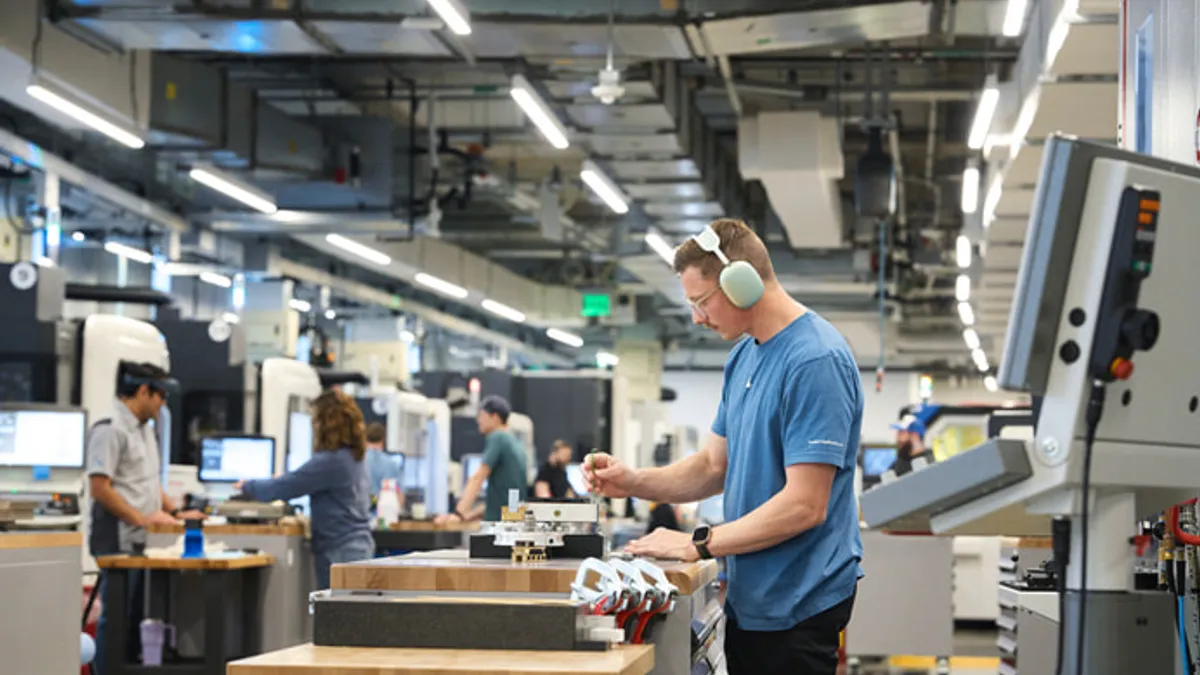Editor's Note: The following is a guest contribution from Anthony Mullen, practice lead, research and development at London-based data science consultancy Profusion.
If you walk past any construction site, you will see a plethora of warning signs. They are a symbol of the importance of health and safety and how far construction sites have developed since the Occupational Safety and Health Act of 1970. Deaths across all industries have fallen from about 38 worker deaths a day in 1970 to 12 a day in 2013. Workplace injury and illness rates have also declined by 67%, while the U.S. workforce has doubled.
Despite the protests of many developers at the time, an increase in safety legislation has not led to a slump in productivity. Construction sites have never been safer or more efficient. This is largely due to rapid advances in technology and planning. Now, with the advent of new technology like wearable devices and developments in data science, construction is set to undergo another revolution that will bring safety and productivity to unprecedented levels.
Wearable technology comes in many forms, from fitness devices like the Fitbit, to communication devices like the Apple Watch, and, more recently, smart gloves, t-shirts and even wearable batteries. "Smart clothing" should be of particular interest to the construction industry when considering the curious fact that construction safety apparel has remained relatively unchanged for the past 50 years.
OSHA reports that 828 construction workers died on the job in 2013, with construction site accidents accounting for almost 20% of all U.S. work-related fatalities across industries. The primary causes of these accidents are known as "The Fatal Four" and are listed as falls, being struck by objects, electrocution and being caught between moving vehicles or machinery.
Wearable technology will be able to greatly reduce these Fatal Four incidents, conceivably preventing up to 478 deaths annually, as well as saving the industry a large amount in compensation costs. Google Glass-type technology could soon be worn by every worker. The display could provide live information to workers, such as which electrical wires are live, the proximity and route of vehicles or machinery and the presence of dangerous substances. This could be further complemented by a GPS tracker, which can tell workers operating heavy machinery if a colleague is nearby. The tracker is accurate enough to tell operators if their colleague has fallen over.
Smart clothing can also help to reveal when muscular injuries have occurred, allowing for speedy treatment and preventing further damage. As prevention is the best cure, wearable devices could also send warnings to workers when they have adopted a dangerous posture while lifting a heavy object or operating heavy machinery. In the future, workers could even wear robotic exoskeletons while undertaking specific tasks to protect themselves from spinal injuries and muscle strain.
Smart glasses could also help with the training of apprentices by providing instructions on how to complete a task. This should help to prevent inexperienced workers from making dangerous mistakes and improve the rate at which new workers acquire skills.
Another key development on construction sites has been the rise of building information modeling (BIM). For several years, the industry has been accessing the building information model via tablets and smartphones on sites. But the coming years will see them access this through convenient hands-free devices such as Google Glass. Conversely, the rise of beacon technology will also make using BIM more intuitive. As operators walk around a building, the model will locate their position and auto-navigate to the correct information in response. The relationship between BIM and smart devices is a symbiotic one. Lastly, the complex nature of BIM requires expert knowledge, but with the rise of smart devices like Google Glass coupled with virtual reality, it will be possible for BIM laymen to understand the information presented.
Smart devices and beacon technology could also be deployed to improve the overall layout and function of a construction site. Technology used within the medical field, such as Vital Connect, already monitor trips and falls. Coupling this with information on the movements of workers, machinery and vehicles and overlaying this data with the site plan using data science techniques will allow construction managers to work out the best methods of construction, plan resources and optimize site layout.
Communication between developers, contractors and consultants will also be improved. They will be able to see construction as it occurs through the Google Glasses on their workers. Problems and modifications could be solved almost immediately without the need for site visits or a drawn out decision-making process.
Data science techniques thrive when exposed to more information to give clear insights. Therefore, the more it is applied to construction projects, the more efficient the results will be. Eventually, data science could reveal the optimum strategy for completing any project — balancing build time, materials and costs with worker productivity and safety.
Building design and urban infrastructure will also be influenced by data science. Placing beacons on existing structures will provide a wealth of information about how people interact with cities. This will inform development design in the future, becoming increasingly prevalent as smart cities become the norm.
Smart devices and data science are transforming the way many industries operate. Construction professionals should ensure they are not left behind in the midst of this innovation. Trialing wearable technology is surprisingly inexpensive, especially in relation to the cost of most construction projects. The time is ripe to invest in wearable technology that will make construction safer, cheaper and more efficient. The future of construction is smart. Future construction leaders should be too.




















